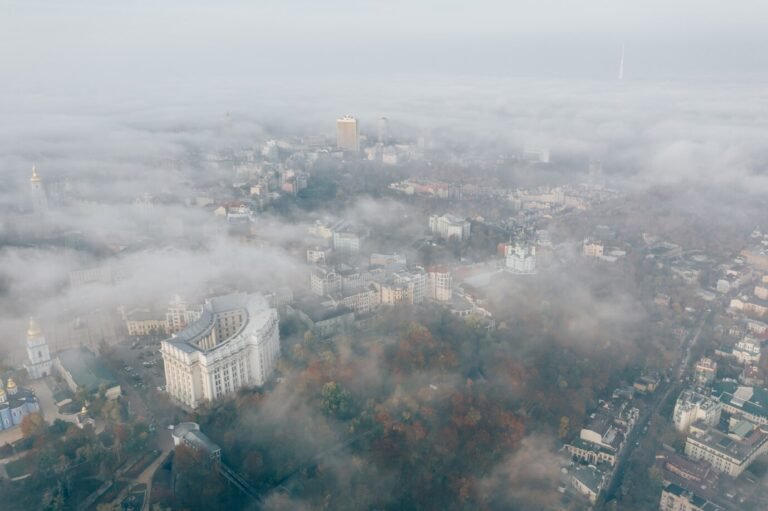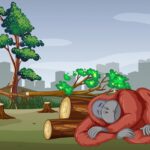When was the last time you looked up at the night sky and saw a dazzling array of stars? For many of us living in cities or suburban areas, experiencing the breathtaking vastness of a clear, unpolluted night sky has become a rarity. Artificial lighting has illuminated our nights, but at a cost: the gradual disappearance of the stars above. This phenomenon, known as light pollution, has quietly crept into our lives, diminishing the wonders of the night and bringing a host of environmental, health, and economic consequences.
Recent studies reveal a concerning trend: light pollution is increasing globally by approximately 9.6% per year, effectively doubling the brightness of our night skies every eight years. This rapid escalation means that more than 80% of the world’s population now lives under “lit skies,” with nearly 99% of Americans and Europeans unable to experience a truly dark night. The excessive use of artificial light not only obscures our view of the cosmos but also disrupts ecosystems, affects human health, and leads to significant energy waste.
In this guide, we’ll look into the various forms of light pollution, its impacts on wildlife and human well-being, and explore real-world experiences alongside expert insights and scientific research. By the end, you’ll have a deeper understanding of why this issue matters and how we can work together to mitigate its effects.

What Is Light Pollution?
Light pollution refers to the inappropriate or excessive use of artificial light, disrupting the natural darkness of our environment. It manifests in several forms:
- Skyglow: The brightening of the night sky over populated areas, making it difficult or impossible to see stars. This is the most pervasive form of light pollution, affecting vast regions and diminishing our ability to connect with the night sky.
- Glare: Excessive brightness that causes visual discomfort or even temporary blindness. Glare can be particularly hazardous for drivers and pedestrians, reducing visibility and increasing the risk of accidents.
- Light Trespass: When unwanted artificial light spills into areas where it isn’t intended or needed, such as streetlights illuminating a bedroom window, disrupting sleep patterns and affecting overall well-being.
- Clutter: Excessive groupings of bright lights that create confusion and visual chaos, often found in over-illuminated urban areas with numerous billboards and streetlights, contributing to both visual discomfort and energy waste.

Understanding these different types of light pollution is the first step toward recognizing their impact on our environment and quality of life. By identifying how and where artificial light is misused, we can begin to implement strategies to reduce its harmful effects and reclaim the beauty of our night skies.
The Impact of Light Pollution on the Environment
Wildlife Disruptions
Artificial lighting at night has a profound impact on nocturnal creatures, leading to disorientation, altered behaviors, and even death.
- Birds: Many bird species migrate at night, using the moon and stars to navigate. Bright city lights can confuse them, causing fatal collisions with buildings. In the U.S. alone, window collisions, primarily due to light pollution, result in the deaths of over 1 billion birds annually, with 56% occurring at low-rise buildings and 44% at residences. Homeowners can mitigate this by turning off unnecessary outdoor lights during migration periods and using window markers to prevent collisions.
- Sea Turtles: Newborn sea turtles instinctively move toward the brightest horizon, which, in natural settings, is the moonlit ocean. However, artificial lights from coastal developments can mislead them inland, leading to dehydration, predation, or fatal encounters with vehicles. For instance, on beaches in Bundaberg, Australia, disoriented hatchlings have been crushed by cars after being drawn toward streetlights. Conservation groups urge residents and businesses to dim or redirect lights during nesting season to protect these vulnerable creatures.
- Insects: Nocturnal insects, such as moths and beetles, are crucial pollinators and a food source for other animals. Artificial lights attract and trap these insects, disrupting their natural behaviors and leading to population declines. A 2025 report highlighted that light pollution significantly affects nocturnal invertebrates, with a 10% annual increase in light pollution due to widespread LED use exacerbating the issue. Simple actions like turning off unnecessary lights and using motion sensors can help mitigate these effects.
The Disruption of Natural Cycles
Light pollution interferes with the circadian rhythms—the internal clocks—of both animals and plants, leading to a cascade of ecological consequences.
- Plants: Plants rely on natural light cues to regulate growth cycles, including flowering and leaf shedding. Artificial lighting can cause trees to bud earlier in spring and retain leaves longer in autumn, disrupting their natural cycles and affecting the wildlife that depends on them. A study in the UK found that budburst occurred up to 7.5 days earlier in areas with significant light pollution.
- Amphibians: Frogs and toads rely on darkness for their mating calls. Excessive nighttime lighting can suppress these calls, reducing reproductive success and leading to population declines.
- Predators: Predatory animals like cougars avoid brightly lit areas, leading to habitat fragmentation and altered hunting behaviors. A 2023 study found that cougars in light-polluted regions changed their movement patterns, potentially impacting their survival and the balance of local ecosystems.
Learn More: 6 Types of Ocean Pollution
How Light Pollution Affects Human Health
The human body is designed to function in sync with Earth’s natural light-dark cycles. Excessive exposure to artificial light—particularly blue light from streetlights, billboards, and screens—disrupts this harmony, leading to various health concerns with severe implications.
Sleep Disruptions and Insomnia
Exposure to artificial light during nighttime can interfere with our sleep patterns. Even minimal light exposure from sources like streetlights or electronic devices can suppress melatonin production, the hormone responsible for regulating sleep. This suppression can prolong the time it takes to fall asleep and lead to fragmented sleep cycles. Consequently, individuals may experience daytime fatigue, reduced alertness, and a diminished quality of life.
Increased Risk of Diseases
- Obesity: Disruptions in our natural sleep-wake cycles can affect metabolism and hunger hormones, potentially leading to weight gain and obesity.
- Depression and Anxiety: A 2025 study highlighted that exposure to artificial light at night is associated with an increased risk of depressive symptoms and suicidal behaviors. The disruption of circadian rhythms by nighttime light exposure can negatively impact mood and mental health.
- Cancer Risks: The World Health Organization has classified night shift work involving exposure to artificial light as a probable carcinogen. Studies suggest a correlation between nighttime light exposure and an increased risk of cancers, particularly breast cancer.
- Cardiovascular Issues: Research indicates that exposure to outdoor artificial light at night can increase the risk of coronary heart disease. Sleep disturbances and stress responses triggered by light pollution may contribute to cardiovascular problems.
Cognitive Decline
Emerging studies suggest a link between nighttime light exposure and cognitive issues. Research indicates that bright outdoor lights at night may increase the risk of developing Alzheimer’s disease, especially in individuals under 65. The disruption of the body’s biological clock and resultant sleep deprivation are believed to contribute to cognitive decline.
Overexposure to bright screens and glare, especially from devices emitting blue light, can cause digital eye strain. Symptoms include dry eyes, headaches, and difficulty focusing, impacting overall well-being and productivity.
Expert Insight
Dr. Richard Stevens, an epidemiologist studying the effects of light pollution on human biology, emphasizes, “Artificial light at night is not just an inconvenience—it’s a major health hazard. The disruption of circadian rhythms is now linked to an increased risk of cancer, particularly breast cancer.”

Economic Costs of Light Pollution
Wasted light is wasted energy. The International Dark-Sky Association estimates that in the U.S. alone, light pollution costs taxpayers about $3 billion per year in unnecessary electricity use.
Energy Waste
In an average year, outdoor lighting in the U.S. consumes approximately 120 terawatt-hours of energy, enough to meet New York City’s total electricity needs for two years. Shockingly, at least 30% of this lighting is wasted due to poorly aimed or unshielded fixtures, translating to $3.3 billion in lost energy annually.
Increased CO₂ Emissions
This excessive energy consumption contributes significantly to carbon dioxide emissions. The 21 million tons of CO₂ released each year from wasted outdoor lighting are equivalent to the emissions from millions of vehicles. To offset this, we’d need to plant approximately 875 million trees annually.
Public Safety Concerns
Over-illumination not only wastes energy but also poses public safety risks. Excessive lighting can cause glare, leading to increased accident risks. For instance, Lambeth Council in London plans to dim street lights to reduce costs, highlighting the balance needed between adequate illumination and safety.
Astronomy and the Loss of Our Cosmic Heritage
To understand how much our night skies have changed, astronomers use the Bortle Scale—a nine-level numeric system that measures the night sky’s brightness at a particular location. Developed by John E. Bortle in 2001, the scale ranges from Class 1, representing the darkest skies, to Class 9, indicative of inner-city skies where only the brightest stars and planets are visible. In a Class 1 area, the Milky Way appears highly structured and prominent; in a Class 9 zone, the night sky is brightened by artificial light, obscuring most celestial objects.
Mauna Kea in Hawaii is known as one of the world’s premier locations for astronomical observations, owing to its high altitude and minimal light pollution. However, increasing artificial light from nearby urban areas, particularly Hilo and Kona, poses a threat to the clarity of the night sky. This light pollution not only hampers scientific research but also diminishes the stargazing experience on this sacred mountain.
Efforts have been made to mitigate light pollution’s impact on Mauna Kea. For instance, lighting ordinances have been implemented to protect the observatories from light pollution, enabling Mauna Kea to be preserved as a very dark site for astronomy.
The impact on astronomy is significant. Research indicates that artificial light pollution affects the skies above many major observatories. Out of 28 major sites studied, only seven have a zenith sky brightness with light pollution below the expected threshold of 1% of natural sky brightness. Mauna Kea is among these sites, but it is already at the critical 1% mark, highlighting the urgent need for continued vigilance in preserving dark skies for astronomical research.
The encroachment of artificial light not only affects scientific endeavors but also impacts cultural and personal experiences. Many individuals today may never experience the wonder of a truly dark sky due to rapid urbanization and increasing light pollution, highlighting the need to preserve our cosmic heritage for future generations

Learn More: Why Is Plastic Pollution Bad for the Environment?
How We Can Combat Light Pollution
1. Smarter Lighting Choices
- Use Shielded Fixtures: Opt for outdoor lighting that directs light downward, minimizing glare and preventing light from spilling into unintended areas. This approach not only reduces light pollution but also enhances visibility where it’s needed most.
- Choose Warmer-Colored LED Bulbs: Select bulbs with a color temperature of 3000 Kelvin or lower. Warmer tones emit less blue light, which is less disruptive to our circadian rhythms and sleep patterns.
- Install Motion Sensors and Timers: Utilize devices that activate lighting only when necessary. This practice conserves energy and reduces unnecessary light exposure during nighttime hours.
2. Community Action
- Advocate for Dark Sky Ordinances: Engage with local governments to implement regulations that limit excessive nighttime lighting. Such ordinances can protect nocturnal environments and promote public health.
- Encourage Sustainable Lighting in Businesses: Promote policies that ensure commercial establishments use lighting responsibly, balancing visibility and energy efficiency while minimizing light pollution.
- Support Organizations Like the International Dark-Sky Association: These organizations work globally to protect night skies and educate the public about the importance of reducing light pollution.
3. Personal Changes
- Turn Off Lights When Not in Use: Make it a habit to switch off lights in unoccupied rooms and outdoor areas. This simple action conserves energy and reduces unnecessary light exposure.
- Use Blackout Curtains: Installing these can prevent external lights from entering your home, improve sleep quality, and reduce the impact of light pollution.
- Limit Screen Time Before Bed: Reducing exposure to screens in the evening helps maintain healthy melatonin levels, supporting better sleep.
Conclusion: A Brighter Future Without Excess Light
Light pollution is a problem that affects everyone—from city dwellers to wildlife. The good news is that we can take simple yet effective steps to reclaim the night sky and restore balance to our ecosystems. By making conscious lighting choices, advocating for responsible policies, and educating others, we can reduce light pollution and once again experience the natural beauty of a starlit sky.
The next time you step outside at night, take a moment to notice the sky. What are you missing? And more importantly, what can you do to bring back the darkness we so desperately need?







